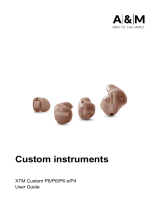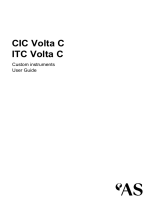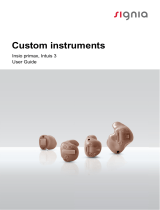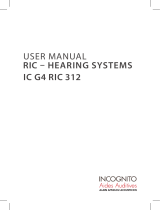
10 11
• Batteries have occasionally been mistaken for pills. Therefore check your medicine
carefully before swallowing any pills.
• Never put your hearing instrument or batteries in your mouth for any reason, as they
are slippery and could be swallowed by accident.
• Most hearing instruments can be supplied with a tamper-resistant battery
compartment upon request. This is strongly recommended for infants, small children,
and people with learning diculties.
If a battery or hearing instrument is swallowed, see a doctor immediately.
Battery use
• Always use batteries recommended by your Hearing Care Professional. Batteries of low
quality may leak and cause bodily harm.
• Never attempt to recharge your batteries. They may explode and cause serious injury.
• Never dispose of batteries by burning them. There is a risk that they will explode and
cause serious injury.
Warnings
Dysfunction in hearing instruments
• Hearing instruments may stop functioning, for instance if the batteries have expired
or if the sound outlet is blocked by moisture or ear wax. You should be aware of this
possibility, in particular when you are in trac or otherwise dependent on warning
sounds.
Active Implants
Caution must be shown with active implants. General advice is to follow the guideline as
recommended by manufacturers of implantable debrillators and pacemakers regarding
use with mobile phones:
• If you wear an active implant, then keep the hearing instrument more than 15 cm away
from the implant e.g. do not carry them in a breast pocket.
• If you have an active brain implant, please contact the manufacturer of your
implantable device for information about the risk of disturbance.
Warnings


























